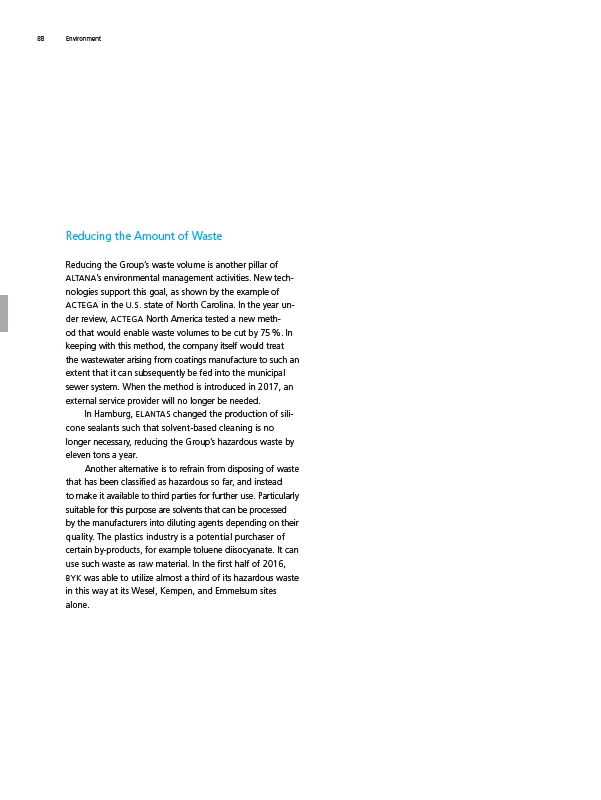
88 Environment
Reducing the Amount of Waste
Reducing the Group’s waste volume is another pillar of
ALTANA’s
environmental management activities. New technologies
support this goal, as shown by the example of
ACTEGA
in the U.S. state of North Carolina. In the year under
review, ACTEGA North America tested a new method
that would enable waste volumes to be cut by 75 %. In
keeping with this method, the company itself would treat
the wastewater arising from coatings manufacture to such an
extent that it can subsequently be fed into the municipal
sewer system. When the method is introduced in 2017, an
external service provider will no longer be needed.
In Hamburg, ELANTAS changed the production of sili-
cone sealants such that solvent-based cleaning is no
longer necessary, reducing the Group’s hazardous waste by
eleven tons a year.
Another alternative is to refrain from disposing of waste
that has been classified as hazardous so far, and instead
to make it available to third parties for further use. Particularly
suitable for this purpose are solvents that can be processed
by the manufacturers into diluting agents depending on their
quality. The plastics industry is a potential purchaser of
certain by-products, for example toluene diisocyanate. It can
use such waste as raw material. In the first half of 2016,
BYK was able to utilize almost a third of its hazardous waste
in this way at its Wesel, Kempen, and Emmelsum
sites
alone.